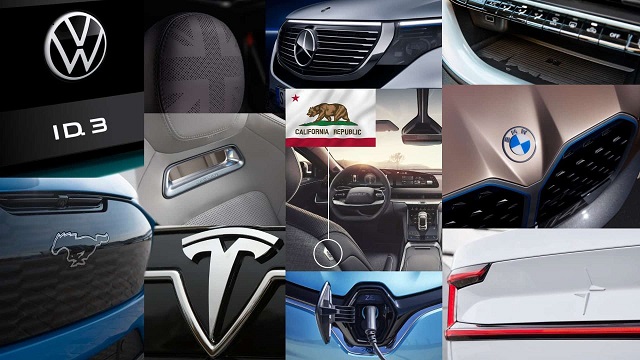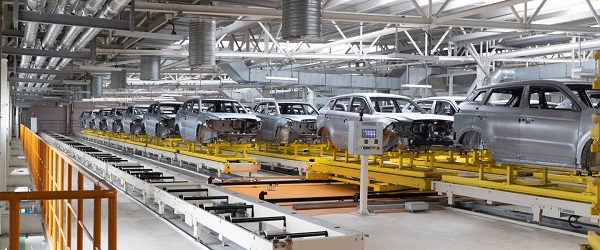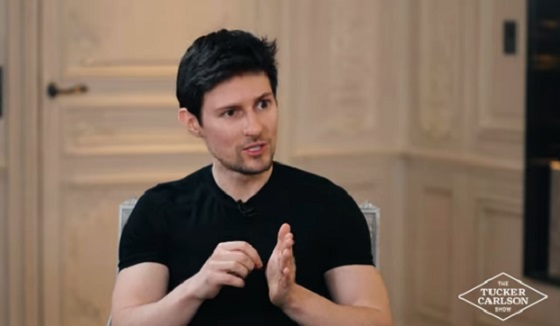Automotive
Automobiles, human nature, and the challenge of building cars that people actually want

From the Frontier Centre for Public Policy
By Terry Etam
Some people out there have an inner itch to do things different. Maybe it’s art, or music, or some other glorious pastime that we as the rest of humanity benefit from, far, far more than we pay. What sort of car these types drive is fascinating; usually something quirky or wonderfully weird; Neil Young spent years before he made it big driving an old hearse, various narcotics taped under the dash.
Others think completely differently, bone-dry aesthetically-speaking; thinkers who just want to make things better. Their inner guiding light is efficiency. I had a genius uncle, a farm boy who made it to high levels in national security in Ottawa through no formal education and sheer ingenuity, who would love describing how he could achieve 70 miles per gallon driving carefully and methodically and under-the-speed-limit around Ottawa in a tiny car, joyously oblivious to Type A heads exploding in his rear-view mirror.
Most people are somewhere in the middle, neither artists nor efficiency maniacs, a space that is quite comfortable for most of humanity. We like nice things, we like how they look, but we also care about practicality. We want to be different from everyone else! But just a bit, or that’s weird. And we all want to drive! Even if it is getting harder and harder for today’s youth to afford it, that drive is still there if finances allow.
This overwhelmingly dominant trait can drive the two extreme camps crazy, a battle that becomes stark and vivid in the automotive industry. Our automotive choices make a statement whether it is intentional or not, and whether we want it or not, because nothing makes a person easier to judge than their automotive preferences.
That’s a reality that people who want to change the world have to accept. It is a very hard thing to swallow, particularly for logicians who can make a near-perfect argument as to why one choice is clearly superior to another, and yet people will look you in the eye and do the opposite. (Long ago when minivans were fully earning their stripes as useful and comfortable transport, about when the perplexing stigma of minivan ownership was setting in, I watched a friend of a friend, standing five-foot-not-much, try and wrestle a mountain bike onto the roof rack of her SUV (yes, yes, I helped), and as she did so she said, “What I really need is a minivan but what would people think of me if I drove one?”)
Minivan vs. SUV was symbolic of the sheer power of how the 80-percent-in-the-middle will shape the landscape, to the extent that personal choice is allowed (hope you’re not scoffing at that, if so, see: federal 2035 all-EV mandate). Because I’m petty and juvenile, it used to fill me with scorn to see people sub-optimize such an expensive purchase on the altar of ‘what other people think of me’.
I’m still petty and juvenile, but have gained enough miles under my wheels to know that things aren’t so simple, and even if they are, it is hardly any of my business what people choose or why. Some care about resale value. Some like an available colour. Some like the feel of the steering wheel or comfort of the seats or the look of the front grille. So what.
It’s not easy for automakers either, because it’s not just that people will actually make auto purchase decisions based on some ridiculously small feature, but also that the lead time from when consumer preferences head in a new direction can be far less than the time it takes to develop a new vehicle. For example, a significant change in gas prices can lead to a preference, or abhorrence, for small, fuel efficient cars, while manufacturers won’t really be able to fully reflect this for a few years.
That’s what makes the EV ‘transition’ so fascinating. If there is one thing that is glaringly obvious in the whole topic, it is that people absolutely do not purchase ‘what they are supposed to’. You can’t make any sense out of it, because the whims and motivations come from external influences that are unpredictable. If Taylor Swift started driving a black Toyota Corolla sedan all of a sudden, what do you think would happen to black Toyota Corolla sedan sales? Not sales of grey ones though, pah! What am I, crazy? Who’d be caught dead in one of those things?
So now, particularly here in Canada but in many other jurisdictions including California, drivers are being told they will not be allowed to buy any new vehicle that isn’t EV, nor will manufacturers be allowed to sell anything that isn’t an EV.
The manufacturers are playing their part, nervously unveiling EV after EV after EV. They advertise the crap out of them, auto publications dutifully test and review them, and the media breathlessly reports how a model’s sales skyrocket by, say 33 percent, when sales go from 3 to 4 units per month.
The media also jumped all over stories about huge demand backlogs, how some new model about to enter showrooms has thousands and thousands of orders or deposits. In 2021, news widely circulated that “Ford F-150 Lightning pre-orders have been closed after nearly 200k reservations”, or Motor Trend’s “Ford Takes in More Than 44,500 F-150 Lightning Orders in 48 Hours”.
Think about how amazing that order book is. A mass manufacturer like Ford is so swamped with interest that they simply must grandiosely and loudly announce: “Sorry Sir or Madam, we can no longer take your order, our success is just too overwhelming.” Many manufacturers reported similar order-book hysteria.
It turns out that the story was surreal, but not quite as it sounds. Through all of 2022, Ford sold only 15,617 electric pickups. The headlines for 2022 results remain starry eyed and insipid: “Ford Tripled BEV Sales In December, Doubled In 2022”, although that couldn’t hold a candle to the infantile enthrallment saved for late 2023: “Ford F-150 Lightning breaks monthly sales record, doubling in November”.
Sales in November 2023 did indeed ‘double’ compared to the prior November, but in the entire quarter Ford sold only 11,905 units. In the two years after the hail-the-future order book bumper crop, Ford only sold about 40,000 F-150 Lightnings. In two years. Recently Ford announced a halving of 2024 production plans down to about 1,600 units per week, or just under 7,000 per month.
Keep in mind that in 2023 Ford sold over 750,000 F-150 internal combustion pickups in the US, and many of these go to urban dwellers for whom an EV pickup might make total sense – ones that rarely leave the city (EVs are in general far better suited to urban environments where they can scoot home safely to a nice warm private charging station every night).
Which brings us back to consumer behaviour again, that mystifying and surely exasperating trait of humanity that no amount of cajoling and ‘proper thinking’ will break. “Two hundred thousand reservations!” to “Slashing production forecasts!” In half. On a variant of the most popular vehicle in the US.
Tesla continues to dominate EV sales, and many people, when they decide they want an EV, mean they want a Tesla (in the pickup world, Rivian might be the Tesla of EV pickups, time will tell). Major auto manufacturers are having a very difficult time seeing EV sales grow to any level that would approach profitability.
It’s hard not to feel bad for them, if one can or should feel bad for huge corporations. How on earth does one plan for the coming year, when two hundred thousand consumers say yes, I want one of those, but then 80 percent change their mind by the time Ford can actually manufacture them?
But observe; whispering in their manufacturing ears are governments saying not subtly that “Don’t worry, we will be legislating internal combustion out of existence, just build them and they will come…” Said less loudly is the supporting evidence: “because they have no choice.” Well, it worked for a while in the Soviet Union didn’t it?
Making things even more complicated for manufacturers are upcoming elections in the US (this year) and Canada (what feels like an eternity but is really only 1.5 years) that could see either minor or major revisions to EV policy rollouts of the past few years.
But forget all the uncertainty surrounding manufacturers; that all gets trumped (no pun intended) by the human element. Here’s an important realization that we all need to accept: Some stuff just gives us a sense of belonging with others in a way that is critical to mental well being. Some people like to dress in the latest fashion. Some get the most popular hair styling. Some drive a rugged SUV because of what it says about them.
That can make manufacturers pull their hair out, because something illogical might be their biggest hit ever. But on top of that one must now layer the rancid decay of politics. EV sales seem to be falling along political fault lines, which in a way is not surprising: one side of the political spectrum sees climate change as a moral imperative to be dealt with as rapidly as possible, and that element, to the extent it can afford it, is responsible for the highest uptake of EVs (it is another sign that ‘left wing vs. right wing’ is a historical anachronism of little value any more; the traditional ‘left’ represented the working class, the downtrodden, the ones that needed a safety net; today’s main EV purchasers are wealthy enough to pursue Teslas first and foremost, often with a multi-car garage full of options). EV as political statement is yet another example of how our preferences link us to a tribe of our choice, rational or not, and it will be supra-humanly difficult to change that, whether in Canada or the US or Togo.
All one can conclude from this hodgepodge of observations is that the auto market will continue to reflect certain aspects of human nature that we may not even be aware of ourselves, and also reflect physical, financial and security realities/rationales that will not be changed by government edict. I have no idea what that means in terms of a transition to EVs, and that trajectory could change with the development of new battery technology, for example. But at present, it should be clear, based on examples like the Ford F-150 Lightning EV experience, that human enthusiasm and professed care does not necessarily translate well into the cold hard reality of what people put their money down on.
It is a nuanced world. People are imperfect and beautifully so, it adds colour to the world. Either the landscape is more or less free, where people express themselves as they wish, or it is a closed quasi- or full-dictatorship where that is not permitted (see: censorship, over-reaching legislation, thought police/moralistic systemic governmental intervention, personal carbon budgets, etc.). The latter never succeeds because it fights human nature, and the former has elements that make no sense outside one’s own circle of people that get it. I choose not to be part of some tribes, but I probably choose to be part of others, and likely do so subconsciously, which makes the whole thing even trickier.
Current politicians and WEF-types believe they have a blueprint for humanity to unroll. It is an absurdity, if for no other reason than they can’t comprehend the complex realities of 8 billion people whom they are trying to force in a certain direction. They are trying to force them all into metaphorical minivans, because minivans make more sense than anything else. They will fail.
Terry Etam is a columnist with the BOE Report, a leading energy industry newsletter based in Calgary. He is the author of The End of Fossil Fuel Insanity. You can watch his Policy on the Frontier session from May 5, 2022 here.
Automotive
Canada’s EV house of cards is close to collapsing

 By Dan McTeague
By Dan McTeague
Well, Canada’s electric vehicle policies are playing out exactly as I predicted. Which is to say, they’re a disaster.
Back in November, in the immediate aftermath of Donald Trump’s re-election, I wrote in these pages that, whatever else that election might mean for Canada, it would prove big trouble for the Justin Trudeau/Doug Ford EV scam.
The substance of their plot works like so: first, the federal and provincial governments threw mountains of taxpayer dollars in subsidies at automakers so that they’d come to Canada to manufacture EVs. Then Ottawa mandated that Canadians must buy those EVs — exclusively — by the year 2035. That way Ford and Trudeau could pat themselves on the back for “creating jobs,” while EV manufacturers could help themselves to the contents of our wallets twice over.
But the one variable they didn’t account for was a return of Donald Trump to the White House.
Trump had run on a promise to save America from their own back-door EV mandates. Though Kamala Harris had denied that any such mandates existed, they did, and they were founded on two acts of the Biden-Harris administration.
First, they issued an Executive Order setting significantly more onerous tailpipe regulations on all internal combustion engine (ICE) vehicles, with the explicit goal of ensuring that 50 percent of all new vehicles sold in America be electric by 2030.
Second, they granted California a waiver to make those regulations more burdensome still, so that only EVs could realistically be in compliance with them. Since no automaker would want to be locked out of the market of the most populous state, nor could they afford to build one set of cars for California (plus the handful of states which have — idiotically — chosen to align their regulations with California’s) and another set for the rest of the country, they would be forced to increase their manufacture and sale of EVs and decrease their output of ICE vehicles.
Trump’s victory took Canada’s political class completely by surprise, and it threw a spanner into the workings of the Liberals’ plan.
That’s because there just aren’t enough Canadians, or Canadian tax dollars, to make their EV scheme even kinda’ work. Canada’s unique access to the world’s biggest market — America — was a key component of the plan.
After all, vehicles are “the second largest Canadian export by value, at $51 billion in 2023, of which 93 percent was exported to the US,” according to the Canadian Vehicle Manufacturers Association, and “Auto is Ontario’s top export at 28.9 percent of all exports (2023.)”
It further depended on Americans buying more and more EVs every year. But since, when given a choice, most people prefer the cost and convenience of ICE vehicles, this would only work if Americans were pushed into buying EVs, even if in a more roundabout way than they’re being forced on Canadians.
Which is why the plan all began to unravel on January 20, the day of Trump’s inauguration, when he signed Executive Order 14154, “Unleashing American Energy,” which, among other things, rescinded Joe Biden’s pro-EV tailpipe regulations. And it has continued downhill from there.
Just last week, the US Senate voted to repeal the Biden EPA’s waiver for California. Not that that’s the end of the story — in the aftermath of the vote, California governor Gavin Newsom vowed “to fight this unconstitutional attack on California in court.” (Though don’t be surprised if that fight is brief and half-hearted — Newsom has been trying to leave his lifelong leftism behind recently and rebrand as a moderate Democrat in time for his own run at the White House in 2028. Consequently, being saved from his own EV policy might only help his career prospects going forward.)
But it’s worth noting the language used by the Alliance for Automotive Innovation, which represents car companies like Toyota, GM, Volkswagen and Stellantis (several of whom, it should be noted, have received significant subsidies from the Liberal and Ford governments to manufacture EVs), which said in a statement, “The fact is these EV sales mandates were never achievable.”
That’s worth repeating: these EV sales mandates were never achievable!
That’s true in California, and it’s true in Canada as well.
And yet, our political class has refused to accept this reality. Doug Ford actually doubled down on his commitment to heavily subsidizing the EV industry in his recent campaign, saying “I want to make it clear… a re-elected PC government will honour our commitment to invest in the sector,” no matter what Donald Trump does.
Except, as noted above, Donald Trump represents the customers Doug Ford needs!
Meanwhile, our environmentalist-in-chief, Mark Carney, has maintained the Liberal Party’s commitment to the EV mandates, arguing that EVs are essential for his vacuous plan of transforming Canada into a “clean energy superpower.” How exactly? That’s never said.
These are the words of con artists, not men who we should be trusting with the financial wellbeing of our country. Unfortunately, in our recent federal election — and the one in Ontario — this issue was barely discussed, beyond an 11th-hour attempted buzzer-beater from Pierre Poilievre and a feeble talking point from Bonnie Crombie about her concern “that the premier has put all our eggs in the EV basket.”
Meanwhile, 2035 is just around the corner.
So we can’t stop calling attention to this issue. In fact, we’re going to shout about our mindless EV subsidies and mandates from the rooftops until our fellow Canadians wake up to the predicament we’re in. It took some time, but we made them notice the carbon tax (even if the policy change we got from Carbon Tax Carney wasn’t any better.) And we can do it with electric vehicles, too.
Because we don’t have the money, either as a nation or as individuals, to prop this thing up forever.
Dan McTeague is President of Canadians for Affordable Energy.
Automotive
EV fantasy losing charge on taxpayer time

From the Fraser Institute
By Kenneth P. Green
The vision of an all-electric transportation sector, shared by policymakers from various governments in Canada, may be fading fast.
The latest failure to charge is a recent announcement by Honda, which will postpone a $15 billion electric vehicle (EV) project in Ontario for two years, citing market demand—or lack thereof. Adding insult to injury, Honda will move some of its EV production to the United States, partially in response to the Trump Tariff Wars. But any focus on tariffs is misdirection to conceal reality; failures in the electrification agenda have appeared for years, long before Trump’s tariffs.
In 2023, the Quebec government pledged $2.9 billion in financing to secure a deal with Swedish EV manufacturer NorthVolt. Ottawa committed $1.34 billion to build the plant and another $3 billion worth of incentives. So far, per the CBC, the Quebec government “ invested $270 million in the project and the provincial pension investor, the Caisse de dépôt et placement du Québec (CDPQ), has also invested $200 million.” In 2024, NorthVolt declared bankruptcy in Sweden, throwing the Canadian plans into limbo.
Last month, the same Quebec government announced it will not rescue the Lion Electric company from its fiscal woes, which became obvious in December 2024 when the company filed for creditor protection (again, long before the tariff war). According to the Financial Post, “Lion thrived during the electric vehicle boom, reaching a market capitalization of US$4.2 billion in 2021 and growing to 1,400 employees the next year. Then the market for electric vehicles went through a tough period, and it became far more difficult for manufacturers to raise capital.” The Quebec government had already lost $177 million on investments in Lion, while the federal government lost $30 million, by the time the company filed for creditor protection.
Last year, Ford Motor Co. delayed production of an electric SUV at its Oakville, Ont., plant and Umicore halted spending on a $2.8 billion battery materials plant in eastern Ontario. In April 2025, General Motors announced it will soon close the CAMI electric van assembly plant in Ontario, with plans to reopen in the fall at half capacity, to “align production schedules with current demand.” And GM temporarily laid off hundreds of workers at its Ingersoll, Ontario, plant that produces an electric delivery vehicle because it isn’t selling as well as hoped.
There are still more examples of EV fizzle—again, all pre-tariff war. Government “investments” to Stellantis and LG Energy Solution and Ford Motor Company have fallen flat and dissolved, been paused or remain in limbo. And projects for Canada’s EV supply chain remain years away from production. “Of the four multibillion-dollar battery cell manufacturing plants announced for Canada,” wrote automotive reporter Gabriel Friedman, “only one—a joint venture known as NextStar Energy Inc. between South Korea’s LG Energy Solution Ltd. and European automaker Stellantis NV—progressed into even the construction phase.”
What’s the moral of the story?
Once again, the fevered dreams of government planners who seek to pick winning technologies in a major economic sector have proven to be just that, fevered dreams. In 2025, some 125 years since consumers first had a choice of electric vehicles or internal combustion vehicles (ICE), the ICE vehicles are still winning in economically-free markets. Without massive government subsidies to EVs, in fact, there would be no contest at all. It’d be ICE by a landslide.
In the face of this reality, the new Carney government should terminate any programs that try to force EV technologies into the marketplace, and rescind plans to have all new light-duty vehicle sales be EVs by 2035. It’s just not going to happen, and planning for a fantasy is not sound government policy nor sound use of taxpayer money. Governments in Ontario, Quebec and any other province looking to spend big on EVs should also rethink their plans forthwith.







